#biodegrade in 35 days in home compost
Explore tagged Tumblr posts
Text
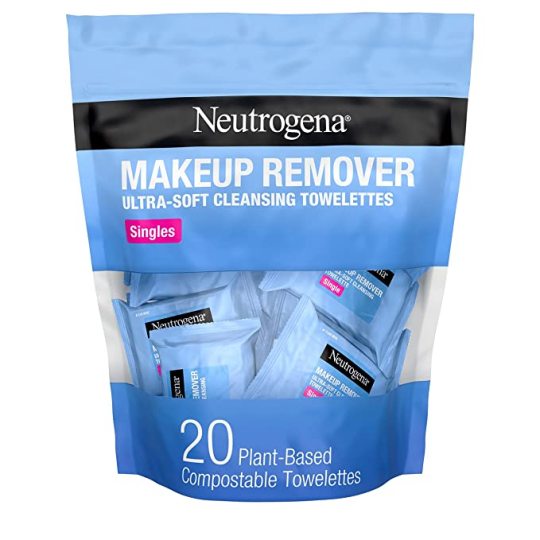
Beauty is power; a smile is its sword
#20-count of individually wrapped pre-moistened Neutrogena Makeup Remover Face Wipe Singles. Individually wrapped facial cleansing towelettes#Makeup remover facial cleansing towelettes work to dissolve all traces of dirt#removes bacteria#impurities#oil and makeup on skin while also removing pollution#sweat and sunscreen#for superior cleansing and makeup removing power at your fingertips#Facial cleansing wet wipes are ophthalmologist-#dermatologist-#and allergy-tested and gentle on the eyes. The effective formula removes up to 99% of makeup--even stubborn waterproof mascara--without tug#Our Clean Promise to you and the Planet. These facial cleansing wipes are made with 100% plant-based fibers#biodegrade in 35 days in home compost#and are formulated without phthalates#parabens#sulfates#alcohols#soaps#or dyes#Single-use wipes are disposable and thoroughly cleanse skin gently and leave behind no heavy residue#so there's no need to rinse. Plus#they're great to use in a daily beauty or skincare routine for a refreshing self-care experience anywhere
1 note
·
View note
Text
Neutrogena Makeup Remover Wipes
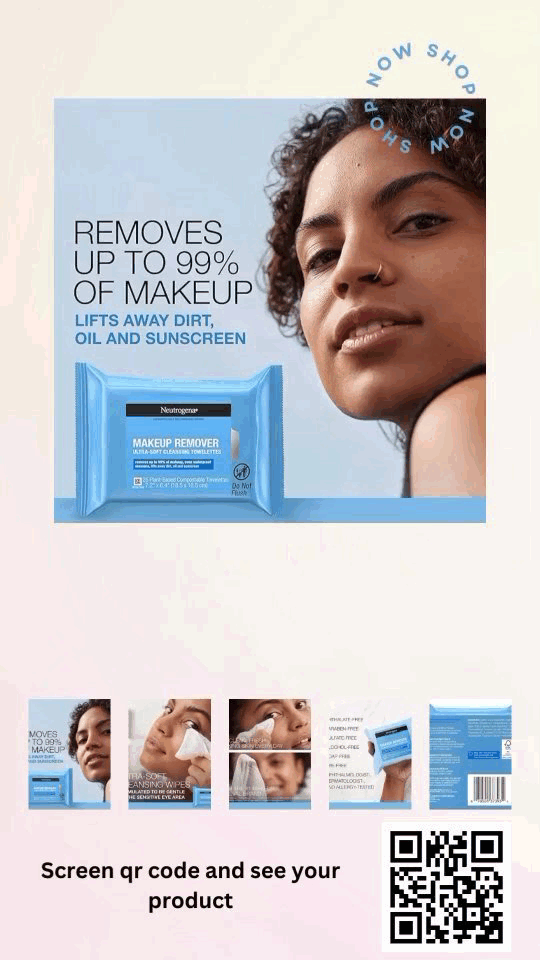
Remove makeup in one easy step with Neutrogena Makeup Remover Face Wipes. These soft and gentle pre-moistened facial cleansing towelettes effectively dissolve all traces of dirt, oil and makeup--even waterproof mascara-- for clean, fresh looking skin every day. Our makeup remover features an effective micellar-infused, triple emollient formula that leaves skin feeling refreshed, nourished, conditioned and thoroughly clean with no heavy residue. These facial towelettes also remove sweat, sunscreen, and pollution from skin with no need to rinse after use. These daily face wipes are formulated to be gentle on the sensitive eye area. The makeup removing wet wipes are formulated without phthalates, parabens, sulfates, alcohols, soaps, or dyes and are ophthalmologist-, dermatologist-, and allergy-tested. Designed with the earth in mind, the compostable wipes are made with 100% plant-based fibers and biodegrade in 35 days in home compost.
👉 Click in see your product
1 note
·
View note
Text

Neutrogena Cleansing Fragrance Free Makeup Remover Face Wipes
About this item
Twin pack with 25-count each of ultra-soft, pre-moistened Neutrogena Makeup Remover Face Wipes with a micellar-infused triple emollient formula remove makeup and cleanse skin while leaving it feeling refreshed, soft, smooth and conditioned
Makeup remover facial cleansing towelettes work to dissolve all traces of dirt, removes bacteria, impurities, oil and makeup on skin while also removing pollution, sweat and sunscreen, for superior cleansing and makeup removing power at your fingertips
Facial cleansing wet wipes are ophthalmologist-, dermatologist-, and allergy-tested and gentle on the eyes. The effective formula removes up to 99% of makeup--even stubborn waterproof mascara--without tugging
Our Clean Promise to you and the Planet. These facial cleansing wipes are made with 100% plant-based fibers, biodegrade in 35 days in home compost, and are formulated without phthalates, parabens, sulfates, alcohols, soaps, or dyes
Makeup wipes are disposable and thoroughly cleanse skin, leaving behind no heavy residue so there's no need to rinse. Plus, they're great to use in a daily beauty or skincare routine for a refreshing self-care experience at-home
More Access>>>
0 notes
Text
Neutrogena Makeup Remover Cleansing Face Wipes
About this item
Twin pack with 25-count each of ultra-soft, pre-moistened Neutrogena Makeup Remover Face Wipes with a micellar-infused triple emollient formula remove makeup and cleanse skin while leaving it feeling refreshed, soft, smooth and conditioned.
Makeup remover facial cleansing towelettes work to dissolve all traces of dirt, removes bacteria, impurities, oil and makeup on skin while also removing pollution, sweat and sunscreen, for superior cleansing and makeup removing power at your fingertips.
Facial cleansing wet wipes are ophthalmologist-, dermatologist-, and allergy-tested and gentle on the eyes. The effective formula removes up to 99% of makeup--even stubborn waterproof mascara--without tugging.
Our Clean Promise to you and the Planet. These facial cleansing wipes are made with 100% plant-based fibers, biodegrade in 35 days in home compost, and are formulated without phthalates, parabens, sulfates, alcohols, soaps, or dyes.
Makeup wipes are disposable and thoroughly cleanse skin, leaving behind no heavy residue so there's no need to rinse. Plus, they're great to use in a daily beauty or skincare routine for a refreshing self-care experience at-home.
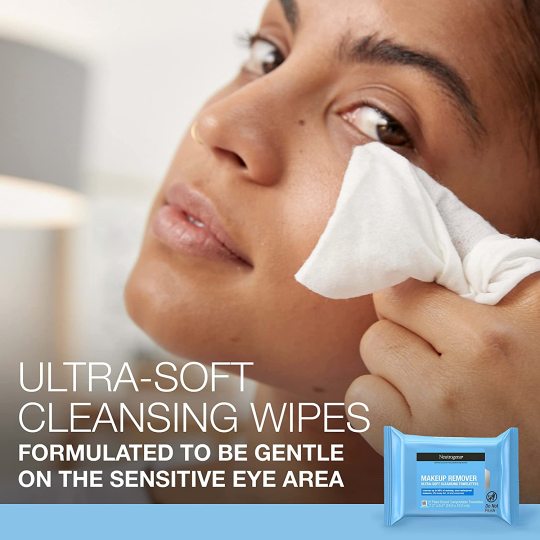
Details info>>https://lovelyoffers4u.com/Neutrogena-Makeup/
0 notes
Text
❤️ Neutrogena Makeup Remover Cleansing Face Wipes, Daily Cleansing Facial Towelettes Remove Makeup & Waterproof Mascara, Alcohol-Free, 100% Plant-Based Fibers, Value Twin Pack, 25 count, 2 pk
👇👇👇👇👇👇👇👇👇👇👇👇👇👇👇

About this item
❤️🔥 Twin pack with 25-count each of ultra-soft, pre-moistened Neutrogena Makeup Remover Face Wipes with a micellar-infused triple emollient formula remove makeup and cleanse skin while leaving it feeling refreshed, soft, smooth and conditioned
❤️🔥 Makeup remover facial cleansing towelettes work to dissolve all traces of dirt, removes bacteria, impurities, oil and makeup on skin while also removing pollution, sweat and sunscreen, for superior cleansing and makeup removing power at your fingertips
❤️🔥 Facial cleansing wet wipes are ophthalmologist-, dermatologist-, and allergy-tested and gentle on the eyes. The effective formula removes up to 99% of makeup--even stubborn waterproof mascara--without tugging
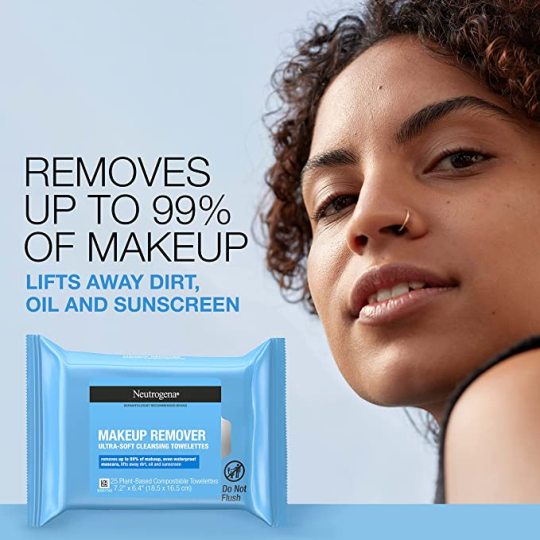
❤️🔥 Our Clean Promise to you and the Planet. These facial cleansing wipes are made with 100% plant-based fibers, biodegrade in 35 days in home compost, and are formulated without phthalates, parabens, sulfates, alcohols, soaps, or dyes


❤️🔥 Makeup wipes are disposable and thoroughly cleanse skin, leaving behind no heavy residue so there's no need to rinse. Plus, they're great to use in a daily beauty or skincare routine for a refreshing self-care experience at-home
Click and buy now 👍
#makeup#make up remover#blog for fashion#fahsion#clothes#face wash#trending#fashion#woman#girlblogging#fashion blog
0 notes
Text

Neutrogena Makeup Remover Cleansing Face Wipes, Daily Cleansing Facial Towelettes to Remove Waterproof Makeup and Mascara, Alcohol-Free, Value Twin Pack, 25 Count, 2 Pack
Price: $9.22 ($0.18 / Count)
Save $10
when you buy $40 of select items Shop items
Brand- Neutrogena
Skin Type- All
Material Feature- Compostable
Unit Count — 50 Count
Number of Items- 1
Get More information and Buy now>>>
About this item
Twin pack with 25-count each of ultra-soft, pre-moistened Neutrogena Makeup Remover Face Wipes with a micellar-infused triple emollient formula remove makeup and cleanse skin while leaving it feeling refreshed, soft, smooth and conditioned
Makeup remover facial cleansing towelettes work to dissolve all traces of dirt, removes bacteria, impurities, oil and makeup on skin while also removing pollution, sweat and sunscreen, for superior cleansing and makeup removing power at your fingertips
Facial cleansing wet wipes are ophthalmologist-, dermatologist-, and allergy-tested and gentle on the eyes. The effective formula removes up to 99% of makeup — even stubborn waterproof mascara — without tugging
Our Clean Promise to you and the Planet. These facial cleansing wipes are made with 100% plant-based fibers, biodegrade in 35 days in home compost, and are formulated without phthalates, parabens, sulfates, alcohols, soaps, or dyes
Makeup wipes are disposable and thoroughly cleanse skin, leaving behind no heavy residue so there’s no need to rinse. Plus, they’re great to use in a daily beauty or skincare routine for a refreshing self-care experience at-home
Get More information and Buy now>>>
Product Description
Remove makeup in one easy step with Neutrogena Makeup Remover Face Wipes. These soft and gentle pre-moistened facial cleansing towelettes effectively dissolve all traces of dirt, oil and makeup — even waterproof mascara — for clean, fresh looking skin every day. Our makeup remover features an effective micellar-infused, triple emollient formula that leaves skin feeling refreshed, nourished, conditioned and thoroughly clean with no heavy residue. These facial towelettes also remove sweat, sunscreen, and pollution from skin with no need to rinse after use. These daily face wipes are formulated to be gentle on the sensitive eye area. The makeup removing wet wipes are formulated without phthalates, parabens, sulfates, alcohols, soaps, or dyes and are ophthalmologist-, dermatologist-, and allergy-tested. Designed with the earth in mind, the compostable wipes are made with 100% plant-based fibers and biodegrade in 35 days in home compost.
Get More information and Buy now>>>
0 notes
Text
Everything You Want To Know About Skip Hire
As far as waste removal goes, nothing beats the all-reliable and available skip. As the United Kingdom battles a waste issue and a pandemic, skip hires have been the beck and call of homeowners and DIY home improvement enthusiasts. Indeed, even gardeners are appreciative of the help a cheap and reliable skip hire gives.
Many companies in the nation have skips for hire. Regardless of whether you need garden waste or domestic waste eliminated, a cheap skip hire administration near you can ease the weight of any house clearing or DIY project.
Reading this, many customers such as yourself may have several inquiries regarding skips. In this article, we answer some of the most widely recognized inquiries regarding skips-from the expenses of skips to skip sizes and past.Why Choose A Skip Hire?

With the number of ways to have your waste hauled off, you might be wondering why you ought to go with a skip.
Not all waste removal methods were created equal.
The following are some reasons why you ought to choose a skip hire near you:
Skips Allow You To Dispose Of Many Kinds Of Rubbish
Garden clearing, home renovation, and house cleaning are all activities that lead to waste. Such projects inevitably lead to ceramic, wood, green, and concrete waste.
A skip is ideal for these materials, especially when there is too much of them for you to drive to the local landfill yourself.
If you are unsure, you can place the following materials in a skip:
● Furniture ● Cardboard ● Grass cuttings ● Soil ● Paper ● Bricks ● Tiling ● Stones ● Clay
Later on, we will go into a skip's possible contents in greater detail.
Skip Hires Are Easily Within Your Reach
Nearly every major area in the United Kingdom has at least 20 skip hire companies. In the West Midlands alone, there are an estimated 454 skip hires. In excess of 200 skip hire companies are in the Southern parts of the country. Manchester has the second-most noteworthy number of skip hires.
Need proof? Use our tool to find a cheap and experienced skip hire in your council.
Hire A Skip, Save the Environment
In the United Kingdom, fly-tipping is on the rise. This has resulted in high amounts of rubbish in landfills and on the sides of major motorways.
In the event that you wish to add to the environment and the UK's sanitation emphatically, hire a skip. The hire of skips can go far in guaranteeing your waste's mindful and legal disposal. Thus, you can breathe a sigh of relief realizing that you won't be penalized for discarding your garbage on roads or motorways. Additionally, a skip hire can be an environmentally-stable way to dispose of your recyclable and dry refuse. The United Kingdom has laws on the disposal of waste in landfills. Although not illegal, disposal into landfills can cause robust taxes for a waste removal company. At the time of composing, £90 is the landfill tax for each huge load of refuse arranged. To save cash, skip hire companies take a minimalist approach to waste disposal. All the more specifically, skip hires go to reusing. They reuse whatever they can so they would not have to dump an excess of trash. This allows them to maximize their benefits and save the environment at the same time.Choose an affordable skip hire, and you will be making a significant contribution as well.
What You Might Need To Arrange Before Hiring A Skip
You may not need any paperwork if you just intend on placing your skip somewhere in your property.
On the other hand, in the United Kingdom, using a skip may require you to sort out a few things before your waste removal operation. Documents like a skip permit and parking bay suspension are a must if the skip will be on an area outside your property.
Skip Hire Permit
A skip hire grant is a document that allows you to place a skip on a "limited area". Many places can be viewed as limited areas. A decent general guideline is to consider public places and motorways places where you cannot place a skip.
Here is a list of some places where you might need a skip permit:
A sidewalk
A park
The side of the road or motorway
Near a school or playground
There are other places. All you need to remember is that these places allow public access and are not your property.
Securing a skip permit or licence from your local council can be quite inconvenient. This is one more reason to choose a skip hire. Skips hires not only offer competitive rates for waste collection. They also process the licence or permit on your behalf.
Parking Bay Suspension
In the event that you expect to place your skip in a parking area, you will require a parking bay suspension.
A parking bay suspension is a document that will allow you to utilize a parking spot for your skip. Obviously, you probably won't require one if the parking area is yours.
Not at all like a skip grant or permit, a parking bay suspension should be arranged by the skip hirer. That means you. No skip hire, reusing and waste management company can arrange this on your behalf.How Large Can Skips Be?

Depending on your waste removal needs, you can choose from a range of skips. Skips come in many sizes. The costs of skips differ from one part of the country to another. However, the primary determinant seems to be the size.
The larger the skip, the more expensive it might be.
2-Yard Skip
A 2-yard skip is otherwise known as a mini-skip. It is the smallest available skip you can rent. With its 25 to 35 bin bag capacity, it takes care of most of your small home improvement waste. The mini-skip is the most compact.
For this reason, a mini skip hire can be the most affordable option for you.
4-Yard Skip
The midi-skip or the 4-yard skip is a size above the mini-skip and can hold about 30 to 45 bin bags. Being larger than a mini-skip, it can even hold small pieces of furniture. It can also accommodate rubble from small-scale DIY projects.
6-Yard Skip- Builders Skip
Manufacturers skip sizes start at six yards and is a popular decision for commercial customers. This size of skip gets its name because of its capacity to hold waste from small-scale development projects. The skip can hold around 50 to 70 container bags.
It is also covered. In this way, you need not stress over anyone fly-tipping into your skip. Simply keep the cover shut.
8-Yard Builders Skip
This skip can hold 75 to 85 container bags. It is an ideal decision for building and development projects. You can even choose it on the off chance that you are accomplishing some major work on your home.
12-Yard Skip-Commercial And Industrial Maxi-Skip
For many homeowners, this is the largest skip that can be leased much of the time. It holds at least 120 container bags, and its size makes it incredible for massive furniture removal.If you plan on hiring a skip this large, there are a few things you may want to consider.
One is lorry access. A skip this size will require a large are for skip delivery and skip collection. Also, its size makes it the most expensive skip for homeowners.
What Can Go Into A Skip?
Not all waste can be placed in a skip.
Skip hires will in general focus on waste that can be reused and reused. This has something to do with landfill taxes. For each huge load of waste, skip hire companies need to pay £90. To be sure, this may not seem like a lot. In any case, when you factor in the amount of waste a company discards in a landfill, it adds up.
In fact, a skip hire company can wind up paying more than £1,000 for discarding a lot of garbage in a day!hhTo avoid this, skip hire companies gather recyclable and biodegradable material. Recyclable waste can be reused or transferred to a recycling facility. Dry biodegradable waste from gardens or homes can be taken to a facility for composting. You can place the following materials in your skip:
● Furniture
● Cardboard
● Grass cuttings
● Soil
● Paper
● Bricks
● Tiling
● Stones
● Clay
On the other hand, the following cannot go into your skip:
● Food waste
● Animal excrement
● Medical waste like used syringes and catheters
● Discarded nappies or diapers
● Paint tins
● Asbestos
● Plasterboard
● Batteries
● Hazardous chemicals
● Light bulbs
If you really need to dispose of these, you need to call a different waste removal service for your business or home.

How To Hire A Skip
Hiring a mini-skip to a commercial skip can be easier if you follow these simple steps:
Step One: Determine The Size Of Your Skip
You can only do this after determining how much waste you have. Doing this allows you to predict how much space you need for the skip and lorry. It will also give you an idea of how expensive the waste removal service will be.
Overestimating the size of a skip has lead to many overloaded skips. When the skip hire sees a skip filled above level, it can refuse to collect the skip. Hence, you need to assess how much waste you have before calling your skip hire.
Step Two: Determine Whether Or Not You Have An Area To Place A Skip
Why? Because if you do not, you might need to have a skip permit. Luckily, Skip Search can help you find a first-class skip hire service that can sort this out on your behalf.
If you need to place the skip in a parking area, you might need to arrange a parking bay suspension with your local council.
Final Step: Call Your Local Skip Hire
With Skip Search, you can choose a cheap skip hire, as well as one that is reliable and near you.
What Not To Do With A Skip
As per waste disposal laws and the regulations your skip hire will have, you cannot do the following:
Fill Your Skip "Above Level"
If you look inside a skip, you will see a line close to the top that reads "level loads only". Filling the skip above this level means that you have overfilled it.
Skip hires do not collect overloaded skips. Overloaded skips are a safety hazard on the road. A skip full of rubbish bags can spill waste onto the street. This can cause traffic, and worse, accidents.
Placing Prohibited Waste
Skip waste is often anything dry, biodegradable, and recyclable. Prohibited waste is the opposite. Also, prohibited waste contains toxic and harmful substances. This is why a skip hire team does not collect items like paint tins, asbestos, and plasterboard.
Disposing of prohibited waste into your skip can lead to the skip hire not collecting it. You may even be charged more for doing this.
Hiring A Skip Without A Permit Or Licence
You do not need a skip licence if you are placing the skip in your property. You will need one if you are putting it in a restricted area like the side of a road or a public space like a park.
To place your skip in a parking area, you will also need a parking bay suspension.
Using a skip without the necessary paperwork can incur a penalty from your local council. The fines can go as high as £1,000.
Place The Skip On An Unstable Surface
If the skip will be in your property, your surface has to be stable. Filled, a skip can weigh as much as two tonnes. Hence, placing it in your yard where the ground may be soft might not be a good idea.
A skip that tilts can spill your rubbish onto your lot or garden. This can set you and the skip hire team back in time.
If You Need A Skip, Look No Further Than Skip Search UK!
With Skip Search UK, you can locate the ideal domestic or commercial skip hire for your waste removal needs. We associate you to a skip hire near your location. Skip Search also encourages you locate an ideal skip hire with serious prices.
1 note
·
View note
Text
5 Best Sustainable Straws
The majority of us enjoy using a straw to sip our Coke, orange juice, cocktails, or any cold beverage. There are currently several reusable eco-friendly straws available as plastic substitutes. But despite their little size, plastic straws are bad for the environment.
Thankfully, environmentally friendly substitutes are now widely available, including silicon, paper, glass, and reusable metal straws. You may have one with you at all times so you never have to go for throwaway plastic straws again by keeping it in your luggage or car. Here are 5 of the top sustainable straws to help you make the decision to stop using plastic:
Bamboo Straws
A fairly fantastic natural material is bamboo. When given the same amount of room as conventional trees, it may grow up to a meter in a day, absorb five times more carbon, and create 35% more oxygen. Bamboo straws hold up well because they are sturdy, robust, and have inherent antibacterial qualities. By itself, bamboo is a fantastic substitute for plastic.
2. Glass Straws
Glass is the material for you if you enjoy watching your preferred alcoholic beverage travel through your glass reusable straw. Glass straws have an advantage over metal ones in that they don't transfer heat and may be used in hot drinks as well.
On the plus side, being able to see through them makes it easier to verify their actual cleanliness. On the down side, if you're not cautious with them, they can wind up in shards on the ground. To ensure that you always have a reusable straw available in the event of an accident, look for models that come with a travel bag.
3. Stainless Steel Straws
A stainless steel straw has an almost infinite lifespan. If you work in the industry, you might never look back if you purchase a set for your home, restaurant, or bar. Although they are a little more expensive, this is an upfront cost. Of course, stainless steel is completely safe and is used in cutlery, kitchenware, and medical facilities.
When purchasing stainless steel straws or searching for the ideal straw for your iced coffee, there are a few things to be on the lookout for. If you have sensitive teeth, if you have sensitive teeth, a silicone tip made of silicone tips that you can removeable silicone tip made of silicone tip made of a silicone tip made of silicone Additionally, be careful when using them with hot beverages since they might carry heat because they are made of metal, which no one enjoys sucking on.
4. Silicone Straws
Are you debating whether to use a silicone or metal straw? Although they might be a little more expensive, silicone straws are smoother. Soft silicone straws are made by manufacturers from food-grade silicone and are less uncomfortable in the mouth. They resemble your beloved plastic muffin pan. As a consequence, whether you have young children or senior citizens, they may be the finest option among eco-friendly reusable straws.
5. Paper Straws
There is a significant shift toward environmentally friendly paper substitutes, which are now proving to be the most popular substitute for their plastic counterparts. Paper straws may already be available in eateries that are cutting-edge to many of you. Paper made from sustainable resources can be a useful green substitute. Of course, the finest ones are biodegradable and compostable.
You should choose your paper straws carefully, though. The mushy after-drink feeling that can be typical with some of the paper straws available is noted by your writer with disgust.
1 note
·
View note
Text
BENEFITS OF KITCHENNETE
As the economy grows and people's living standards improve, food and plastic packaging manufacturers are finding more and more reasons to use plastic food packaging. Plastic is widely used because it is an inexpensive and readily available material. Disposable cutlery is easy to use, but its negative impact on the environment cannot be ignored and in addition, disposable plastic products are not made from sustainable materials. It takes a long to decompose, so using single use plastic things only adds to our growing waste problem.
Nowadays, more and more biodegradable disposable cutleries have been used. The masses are using forks and spoons because biodegradable and compostable disposable cutlery is as convenient as disposable plastic products without negatively impacting the environment. Since most biodegradable plates and compostable disposables are made from bagasse, bamboo, recycled paper, corn starch, and even fallen leaves and are 100% sustainable and earth-friendly, the products do not deplete the earth's natural resources.
Benefits of using KITCHENNETE
There are several benefits to choosing biodegradable cutlery over those made from petroleum-based plastics. In general, they are better for the environment. Most specifically, they reduce pollution, use less energy, limit the use of non-renewable resources, and produce less waste overall.
• Non-toxic
Plastic products, especially food packaging, are responsible for leaching toxic chemicals into food. This is because single-use plastics are treated with various chemicals, including dyes, bleaches, and inks. Some of these products are safe, and some are not so safe. For example, plastic bottles can release harmful chemicals such as Bisphenol A when they contact hot drinks. These chemicals affect the endocrine system and cause various health problems, from hormonal imbalances and metabolic problems to certain cancers.
• No Clean-up
The large number of plates and cutleries you may use in your daily work lunches, meals at home, picnics, or large gatherings accompanied by washing are the biggest downside of gathering at home. It would certainly be best if you could wash all the tiles and utensils after an exhausting and enjoyable meal. Biodegradable plates and compostable disposables are just as convenient to use as disposable plastic products, and instead of using plastic cutleries, you should use wooden cutlery. Using this disposable cutlery, you only need to care about having a fun party with your guests and not worry about cleaning a lot of cutleries after the party.
• Practicality
The biodegradable cutlery available in the market is highly practical. Knives are sharp enough to cut into steaks, and forks can easily be used for salads. Plates and bowls can be used for cold food, and hot food and soup can be eaten without leaking.
• Less pollution
The manufacture of biodegradable plastics is far less polluting to the environment than petroleum-based plastics. In addition, when plastics made from biodegradable materials eventually decompose, they break down into non-toxic, non-hazardous elements that degrade over time, and these non-toxic, non-hazardous elements are released back into the soil.
• Less Energy
Making biodegradable plates and compostable disposables is more energy-efficient than making single-use plastics. Biodegradable plates and utensils require less energy to manufacture. In addition, the materials used for biodegradable plates and cutlery are renewable, so they do not deplete the earth's natural resources. Typically, these products are made from sugar cane, bamboo, corn, etc. Biodegradable plastics require only 35% of the energy needed to make petroleum-based plastics.
• Fewer non-renewable resources
Approximately 200,000 barrels of oil are used every day to make plastics from petroleum-based products. By using products made from biodegradable materials, the use of non-renewable resources can be significantly reduced.
• Waste Reduction
The use of biodegradable plastics helps reduce waste. They can be used in compost piles instead of being placed in traditional landfills. The compost can then be turned into fertilizer for future use rather than lying in a landfill for the foreseeable future.
By Saurabh Suri
0 notes
Text
Neutrogena Makeup Remover Cleansing Face Wipes
Product Price: $8.99 https://amzn.to/3bapYQ3
Product Description Remove makeup in one easy step with Neutrogena Makeup Remover Face Wipes. These soft and gentle pre-moistened facial cleansing towelettes effectively dissolve all traces of dirt, oil and makeup--even waterproof mascara-- for clean, fresh looking skin every day. Our makeup remover features an effective micellar-infused, triple emollient formula that leaves skin feeling refreshed, nourished, conditioned and thoroughly clean with no heavy residue. These facial towelettes also remove sweat, sunscreen, and pollution from skin with no need to rinse after use. These daily face wipes are formulated to be gentle on the sensitive eye area. The makeup removing wet wipes are formulated without phthalates, parabens, sulfates, alcohols, soaps, or dyes and are ophthalmologist-, dermatologist-, and allergy-tested. Designed with the earth in mind, the compostable wipes are made with 100% plant-based fibers and biodegrade in 35 days in home compost.
Product details Is Discontinued By Manufacturer : No Product Dimensions : 3.5 x 4.75 x 4 inches; 2.47 Ounces Item model number : 6837393 UPC : 070501373934 731093215407 304067314729 731093224300 Manufacturer : Johnson & Johnson ASIN : B00U2VQZDS Country of Origin : USA
Domestic Shipping: Item can be shipped within U.S. #shipping#oil#NeutrogenaMakeup#NeutrogenaMakeupRemover#FaceWipes#WaterproofMakeup#FacialTowelettes#amazon#onlinebusiness#onlineshop#women#womenshealth#skincare
0 notes
Text
Neutrogena Makeup Remover Cleansing Face Wipes, Daily Cleansing Facial
BrandNeutrogenaScentUnscented Material Type FreeAlcohol-FreeSkin TypeAllItem Dimensions LxWxH3.5 x 4.75 x 4 inches
>>GET BUY THIS PRODUCT:https://amzn.to/3yO1qUF
Twin pack with 25-count each of ultra-soft, pre-moistened Neutrogena Makeup Remover Face Wipes with a micellar-infused triple emollient formula remove makeup and cleanse skin while leaving it feeling refreshed, soft, smooth, and conditioned
Makeup remover facial cleansing towelettes work to dissolve all traces of dirt, remove bacteria, impurities, oil, and makeup on the skin while also removing pollution, sweat, and sunscreen, for superior cleansing and makeup removing power at your fingertips
Facial cleansing wet wipes are ophthalmologist-, dermatologist-, and allergy-tested and gentle on the eyes. The effective formula removes up to 99% of makeup--even stubborn waterproof mascara--without tugging
Our Clean Promise to you and the Planet. These facial cleansing wipes are made with 100% plant-based fibers, biodegrade in 35 days in home compost, and are formulated without phthalates, parabens, sulfates, alcohols, soaps, or dyes
Makeup wipes are disposable and thoroughly cleanse the skin, leaving behind no heavy residue so there's no need to rinse. Plus, they're great to use in a daily beauty or skincare routine for a refreshing self-care experience at-home
#makeup#makeupartist#makeupaddict#makeuplover#makeupjunkie#makeuptutorial#makeupforever#makeupbyme#makeupoftheday#makeuplook#makeupart#makeupblogger#makeuplove#makeupartistsworldwide#makeupgeek#makeupmafia#makeupvideo#makeuplovers#makeupvideos#makeupblog#makeupartistworldwide#makeupgoals#makeupporn#Makeupdolls#makeuplife#makeupgirl#makeupobsessed#makeuptalk#makeupph#makeupmurah
1 note
·
View note
Text
Remove Your Makeup With Neutrogena Makeup Remover Cleansing Face Wipes!!
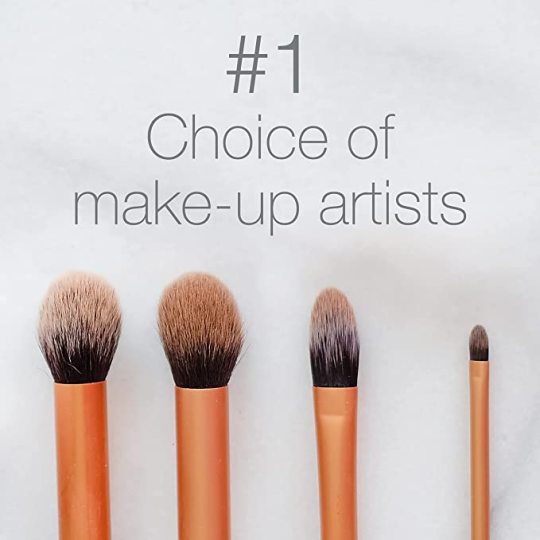

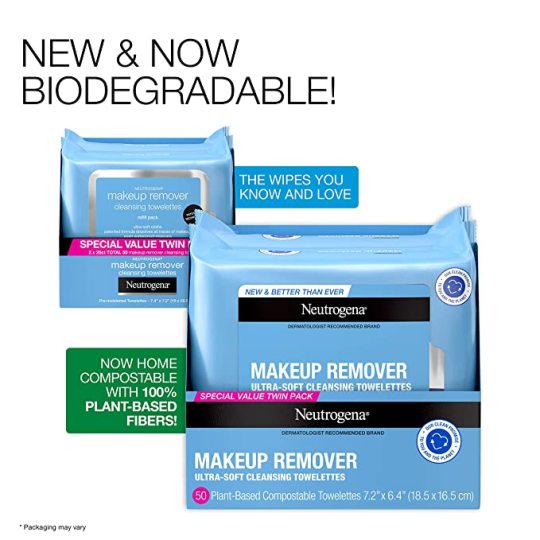
Remove makeup in one easy step with Neutrogena Makeup Remover Face Wipes. These soft and gentle pre-moistened facial cleansing towelettes effectively dissolve all traces of dirt, oil and makeup--even waterproof mascara-- for clean, fresh looking skin every day. Our makeup remover features an effective micellar-infused, triple emollient formula that leaves skin feeling refreshed, nourished, conditioned and thoroughly clean with no heavy residue. These facial towelettes also remove sweat, sunscreen, and pollution from skin with no need to rinse after use. These daily face wipes are formulated to be gentle on the sensitive eye area. The makeup removing wet wipes are formulated without phthalates, parabens, sulfates, alcohols, soaps, or dyes and are ophthalmologist-, dermatologist-, and allergy-tested. Designed with the earth in mind, the compostable wipes are made with 100% plant-based fibers and biodegrade in 35 days in home compost.
Grab From Here!!
1 note
·
View note
Text
Neutrogena Makeup Remover Cleansing Face Wipes
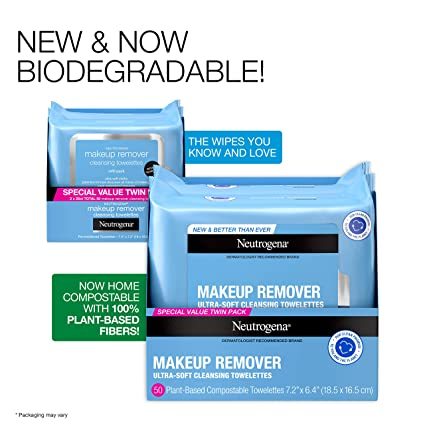
Neutrogena Makeup Remover Cleansing Face Wipes, Daily Cleansing Facial Towelettes to Remove Waterproof Makeup and Mascara, Alcohol-Free, Value Twin Pack, 25 Count, 2 Pack
Twin pack with 25-count each of ultra-soft, pre-moistened Neutrogena Makeup Remover Face Wipes with a micellar-infused triple emollient formula remove makeup and cleanse skin while leaving it feeling refreshed, soft, smooth and conditioned
Makeup remover facial cleansing towelettes work to dissolve all traces of dirt, removes bacteria, impurities, oil and makeup on skin while also removing pollution, sweat and sunscreen, for superior cleansing and makeup removing power at your fingertips
Facial cleansing wet wipes are ophthalmologist-, dermatologist-, and allergy-tested and gentle on the eyes. The effective formula removes up to 99% of makeup--even stubborn waterproof mascara--without tugging
Our Clean Promise to you and the Planet. These facial cleansing wipes are made with 100% plant-based fibers, biodegrade in 35 days in home compost, and are formulated without phthalates, parabens, sulfates, alcohols, soaps, or dyes
Makeup wipes are disposable and thoroughly cleanse skin, leaving behind no heavy residue so there's no need to rinse. Plus, they're great to use in a daily beauty or skincare routine for a refreshing self-care experience at-home
Buy Here
0 notes
Text
What is a disposable pillow?
These one-time-use pillows provide the same level of comfort as more expensive reusable pillows. Made of 100% polyester that is flame retardant. The filler is composed of recyclable material.
Disposable pillows protect against stains and spills, aid in infection control, and reduce the chance of cross-contamination. They are appropriate for use in hospitals, physicians' offices, nursing homes, and other professional medical environments, particularly those with short stays and regular bedding changes.
Single-use bed linen is an excellent alternative to reusable sheets and contributes to a hospital's sanitary environment. These disposable bed covers remove the need for laundering, protect against spills and stains, prevent cross-contamination, and aid in infection control.
As the name implies, disposable hospital pillows are those that can be discarded when no longer required. They are biodegradable, which means they will not harm the environment. Simply place the used sheets in the compost and carry on with your life.
Cotton is a natural product that is totally biodegradable when added to a compost pile or bin.
Bamboo sheets may grow up to four feet per day, absorb five times the amount of carbon dioxide absorbed by most other trees, and produce approximately 35% more oxygen. It regenerates rapidly after harvesting and grows well with little water and no pesticides.
Organic cotton hospital pillows are typically stronger and more resistant to wear and tear than traditional cotton bedding, owing to the fact that chemical processing weakens the fiber.
Be sure to wash your sheets before using them for the first time, since they may feel a little rough out of the packaging. Certain experts even propose pre-washing your new sheets with one cup of baking soda to begin the wash cycle, followed by one cup of white vinegar during the rinse cycle.
If you desire firm and sturdy pillows, choose 100 percent natural wool or cotton stuffing. Because wool and cotton pillows are hypoallergenic and resistant to dust mites, mold, and germs, you won't experience any adverse responses such as rashes, itching, or breathing difficulties.
0 notes
Text
6 Ways to Make Your Coffee Routine More Sustainable

Coffee and the American morning go together like peanut butter and jelly. More than 60 percent of Americans drink it daily, the country averaging three cups per person for a total of 400 million cups of coffee per day. The United States leads consumer consumption globally.
The downside to America’s coffee habit is rampant waste: One sobering statistic suggests 25 billion cardboard and styrofoam cups, used only once, are tossed into the American waste stream each year.
Coffee drinking will never be a truly closed-loop, sustainable activity — for starters, it grows in far-flung places. Given climate change threatens coffee production worldwide, every effort to reduce one’s carbon footprint helps ensure a future with coffee in it; this includes buying beans from thoughtful roasters, going the manual brewing route at home, and carrying reusable vessels.
1. Know the Roaster
The first step to conscientious coffee drinking is to consider the bean source. Specialty coffee roaster groups such as Cooperative Coffee, which boasts over 20 members, source organic coffee from small-scale farmers, emphasizing long-term, sustainable practices. Counter Culture, although not a member of such a cooperative, applies the same ethos with its remarkable transparency, laying bare all its 300-plus contracts with farmers, as well as measuring its greenhouse gas emissions, plastic reduction, and pricing.
Other roasters have overhauled their operations and capital investments. For example, Peet’s Coffee built the first Leadership in Energy and Environmental Design (LEED)-certified roasting plant in Alameda, Calif., in 2007. More than 75 percent of construction waste from the project was recycled. Currently, Peet’s roasting operations, serving 252 locations across the U.S., use 40 percent less natural gas, run on high efficiency lighting, and conserve water use.
2. Pick Packaging Wisely
To keep coffee fresh, home users can’t buy in bulk, rather deferring to 12- and 16-ounce bags. The cumulative effect: 145 million bags into the garbage worldwide, annually. To combat this, Brooklyn Roasting Company’s 12-ounce tin-steel containers are designed for segregation by magnet in landfills.
Some roasters, such as Sweet Bloom in Denver and Sightglass in San Francisco, offer not just biodegradable, but compostable bags. However, consumers must remember to remove the tin tie and degassing valve. Even further along the curve is Elevate Packaging’s completely compostable coffee bag. Companies like TerraCycle offer recycling solutions for coffee bags, though the onus is on the consumer to track down deposit bins.
3. Grind With Care
Compared to electric machines, manual grinders require more time, effort, and, unfortunately, can be limited in capacity to less than the equivalent of two mugs. The good news is that the build quality and precision of manual grinders introduced in the last decade means users won’t sacrifice precision, control, or longevity.
Spare those elbows and shoulder joints with a quality hand grinder offering steel burrs for speed and uniformity and two-mug capacity (at least 35 grams). Plan on spending far more than $100 on grinders like the 1Zpresso J series, JX, Kinu M47, or Orphan Lido 3.
4. Do it for the Gram
Specialty coffee enthusiasts know brewing, like baking, demands careful measurements. However, few modern analog scales are sensitive enough to measure within 1 gram of precision. Plus, most scales are digital, requiring batteries or electricity. The solar scale by MUJI is one of few renewable energy options offering 1 gram increments.
5. Find a Reusable Filter
Brewing coffee at home saves money and cuts down on to-go cups. For those lucky enough to own a Chemex Coffeemaker, first made in 1941 (and seen in Don Draper’s kitchen in “Mad Men”), a reusable cloth filter or cone can be used in place of single-use paper filters. The CoffeeSock is handmade in Austin, Texas, from organic cotton grown in North Carolina.
Maintenance is simple: Rinse and dry between each use, then boil every four to six weeks to remove coffee oils. Stainless steel filters are even easier to maintain. Ovalware and Barista Warrior both sell cones in three finishes: stainless steel, gold and rose gold/copper, respectively. Able Kone has great design chops, albeit for double the price.
6. Consider the Cup
Most — almost all — cups can’t be recycled because they are coated with a plastic resin. Companies have made strides toward compostable or recyclable versions, though so far, there’s been little scale. Starbucks recently announced product trials of greener cups with biodegradable liners. Of course, this still requires users to dispose of them properly.
Besides the sheer physical volume of waste, cup production is energy- and resource-intensive. According to the nonprofit Clear Water Fund, “Eighty percent of the pollution happens upstream during the extraction and manufacturing phase of the product’s life-cycle before it even reaches a consumer’s hands. Transporting used cups to a landfill or recycling facility is energy intensive.”
Instead of demanding technology serve throwaway culture, a collective mind shift, like we did with straws, can curtail waste. In essence: Carry a reusable mug. A host of options have hit the market, employing different materials and solutions to the same problem. As an incentive to BYO, many coffee shops now offer discounts for the effort.
The Joco Cup features a glass wall wrapped in silicone. However, one drawback for consumers on foot and not in cars is that the heavier glass can drop and shatter. Keep Cup offers a lighter solution: In addition to glass and stainless steel, the company produces a reusable plastic version. Additionally, an innovative brand out of Australia won a design award for its Huskee Cup made of coffee husk, an organic waste material produced during coffee milling. Skip bamboo cups for now; they’ve been shown to leach chemicals into hot liquids.
Of course, the ultimate way to enjoy coffee from a café sustainably is to sit down with a ceramic mug and sip it mindfully, like they did in the old days. But until that time arises, consider these actionable items to make your coffee consumption better for the environment.
The article 6 Ways to Make Your Coffee Routine More Sustainable appeared first on VinePair.
source https://vinepair.com/articles/6-ways-to-make-your-coffee-routine-more-sustainable/
source https://vinology1.wordpress.com/2020/04/20/6-ways-to-make-your-coffee-routine-more-sustainable/
0 notes
Text
6 Ways to Make Your Coffee Routine More Sustainable
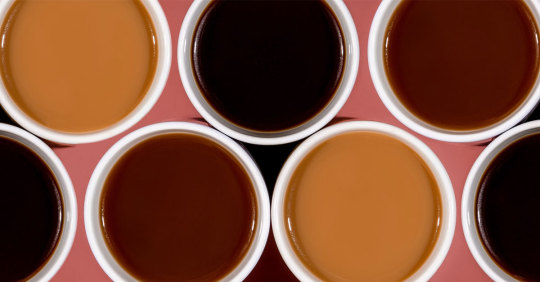
Coffee and the American morning go together like peanut butter and jelly. More than 60 percent of Americans drink it daily, the country averaging three cups per person for a total of 400 million cups of coffee per day. The United States leads consumer consumption globally.
The downside to America’s coffee habit is rampant waste: One sobering statistic suggests 25 billion cardboard and styrofoam cups, used only once, are tossed into the American waste stream each year.
Coffee drinking will never be a truly closed-loop, sustainable activity — for starters, it grows in far-flung places. Given climate change threatens coffee production worldwide, every effort to reduce one’s carbon footprint helps ensure a future with coffee in it; this includes buying beans from thoughtful roasters, going the manual brewing route at home, and carrying reusable vessels.
1. Know the Roaster
The first step to conscientious coffee drinking is to consider the bean source. Specialty coffee roaster groups such as Cooperative Coffee, which boasts over 20 members, source organic coffee from small-scale farmers, emphasizing long-term, sustainable practices. Counter Culture, although not a member of such a cooperative, applies the same ethos with its remarkable transparency, laying bare all its 300-plus contracts with farmers, as well as measuring its greenhouse gas emissions, plastic reduction, and pricing.
Other roasters have overhauled their operations and capital investments. For example, Peet’s Coffee built the first Leadership in Energy and Environmental Design (LEED)-certified roasting plant in Alameda, Calif., in 2007. More than 75 percent of construction waste from the project was recycled. Currently, Peet’s roasting operations, serving 252 locations across the U.S., use 40 percent less natural gas, run on high efficiency lighting, and conserve water use.
2. Pick Packaging Wisely
To keep coffee fresh, home users can’t buy in bulk, rather deferring to 12- and 16-ounce bags. The cumulative effect: 145 million bags into the garbage worldwide, annually. To combat this, Brooklyn Roasting Company’s 12-ounce tin-steel containers are designed for segregation by magnet in landfills.
Some roasters, such as Sweet Bloom in Denver and Sightglass in San Francisco, offer not just biodegradable, but compostable bags. However, consumers must remember to remove the tin tie and degassing valve. Even further along the curve is Elevate Packaging’s completely compostable coffee bag. Companies like TerraCycle offer recycling solutions for coffee bags, though the onus is on the consumer to track down deposit bins.
3. Grind With Care
Compared to electric machines, manual grinders require more time, effort, and, unfortunately, can be limited in capacity to less than the equivalent of two mugs. The good news is that the build quality and precision of manual grinders introduced in the last decade means users won’t sacrifice precision, control, or longevity.
Spare those elbows and shoulder joints with a quality hand grinder offering steel burrs for speed and uniformity and two-mug capacity (at least 35 grams). Plan on spending far more than $100 on grinders like the 1Zpresso J series, JX, Kinu M47, or Orphan Lido 3.
4. Do it for the Gram
Specialty coffee enthusiasts know brewing, like baking, demands careful measurements. However, few modern analog scales are sensitive enough to measure within 1 gram of precision. Plus, most scales are digital, requiring batteries or electricity. The solar scale by MUJI is one of few renewable energy options offering 1 gram increments.
5. Find a Reusable Filter
Brewing coffee at home saves money and cuts down on to-go cups. For those lucky enough to own a Chemex Coffeemaker, first made in 1941 (and seen in Don Draper’s kitchen in “Mad Men”), a reusable cloth filter or cone can be used in place of single-use paper filters. The CoffeeSock is handmade in Austin, Texas, from organic cotton grown in North Carolina.
Maintenance is simple: Rinse and dry between each use, then boil every four to six weeks to remove coffee oils. Stainless steel filters are even easier to maintain. Ovalware and Barista Warrior both sell cones in three finishes: stainless steel, gold and rose gold/copper, respectively. Able Kone has great design chops, albeit for double the price.
6. Consider the Cup
Most — almost all — cups can’t be recycled because they are coated with a plastic resin. Companies have made strides toward compostable or recyclable versions, though so far, there’s been little scale. Starbucks recently announced product trials of greener cups with biodegradable liners. Of course, this still requires users to dispose of them properly.
Besides the sheer physical volume of waste, cup production is energy- and resource-intensive. According to the nonprofit Clear Water Fund, “Eighty percent of the pollution happens upstream during the extraction and manufacturing phase of the product’s life-cycle before it even reaches a consumer’s hands. Transporting used cups to a landfill or recycling facility is energy intensive.”
Instead of demanding technology serve throwaway culture, a collective mind shift, like we did with straws, can curtail waste. In essence: Carry a reusable mug. A host of options have hit the market, employing different materials and solutions to the same problem. As an incentive to BYO, many coffee shops now offer discounts for the effort.
The Joco Cup features a glass wall wrapped in silicone. However, one drawback for consumers on foot and not in cars is that the heavier glass can drop and shatter. Keep Cup offers a lighter solution: In addition to glass and stainless steel, the company produces a reusable plastic version. Additionally, an innovative brand out of Australia won a design award for its Huskee Cup made of coffee husk, an organic waste material produced during coffee milling. Skip bamboo cups for now; they’ve been shown to leach chemicals into hot liquids.
Of course, the ultimate way to enjoy coffee from a café sustainably is to sit down with a ceramic mug and sip it mindfully, like they did in the old days. But until that time arises, consider these actionable items to make your coffee consumption better for the environment.
The article 6 Ways to Make Your Coffee Routine More Sustainable appeared first on VinePair.
Via https://vinepair.com/articles/6-ways-to-make-your-coffee-routine-more-sustainable/
source https://vinology1.weebly.com/blog/6-ways-to-make-your-coffee-routine-more-sustainable
0 notes